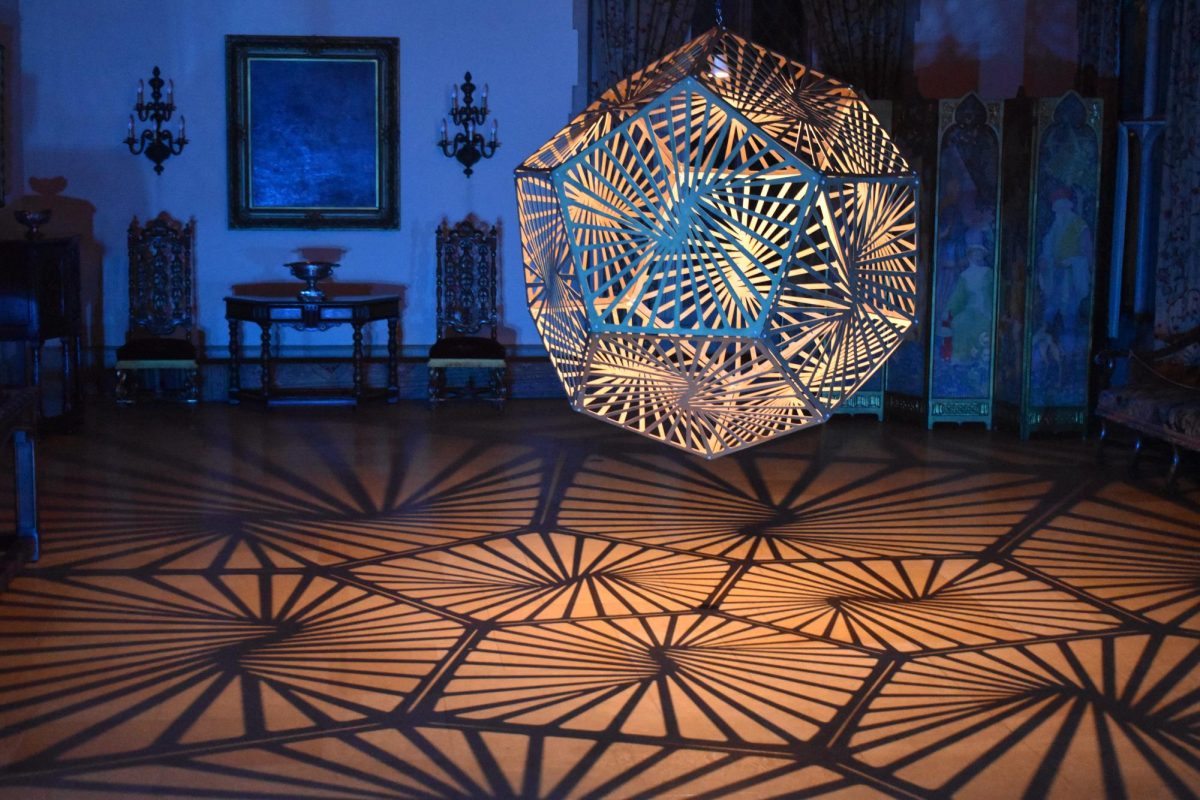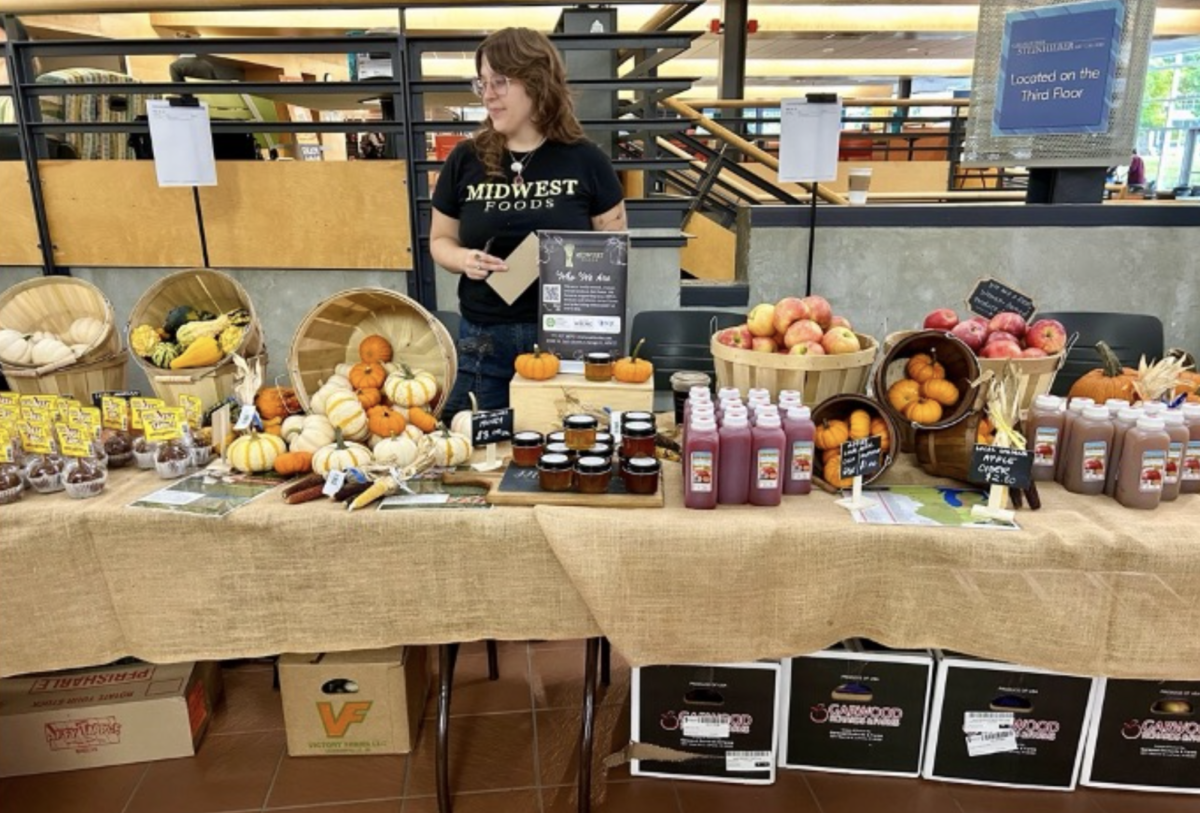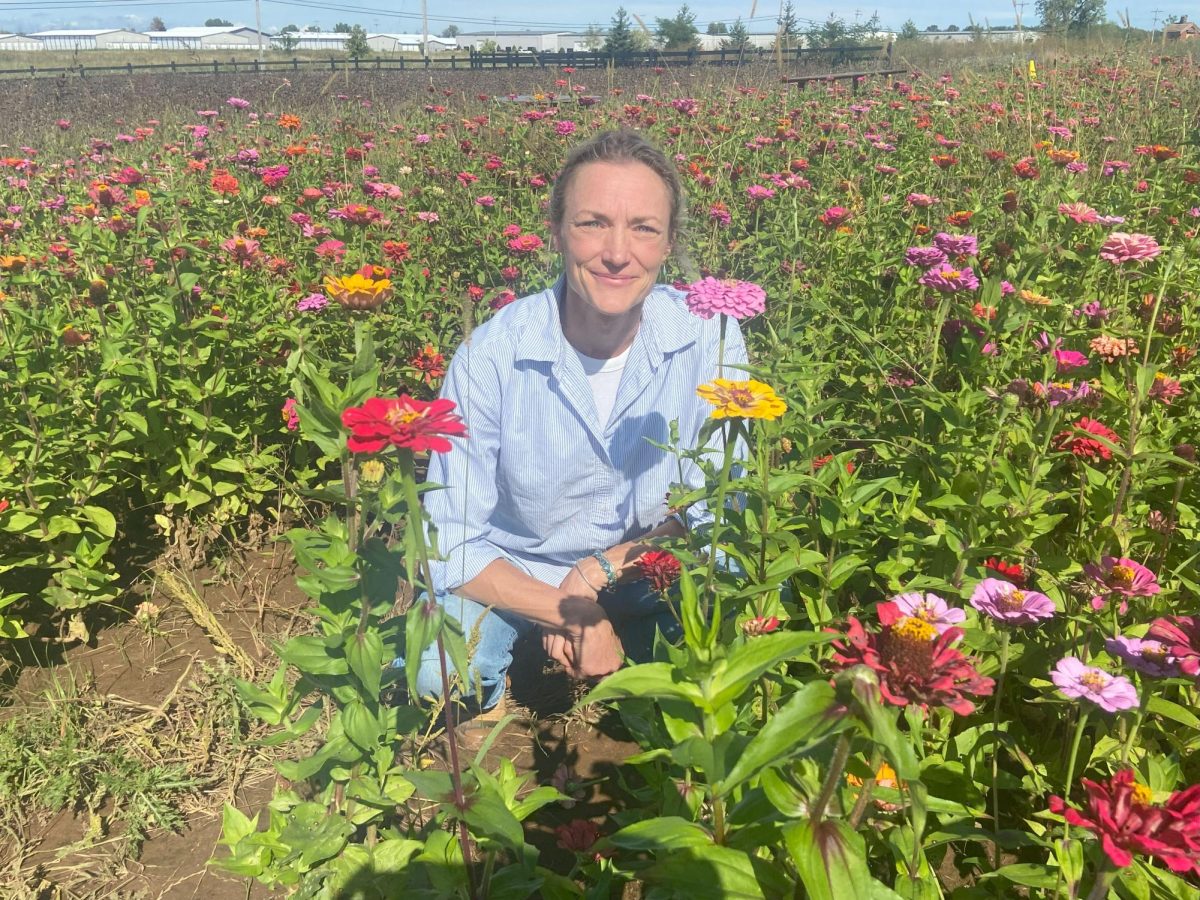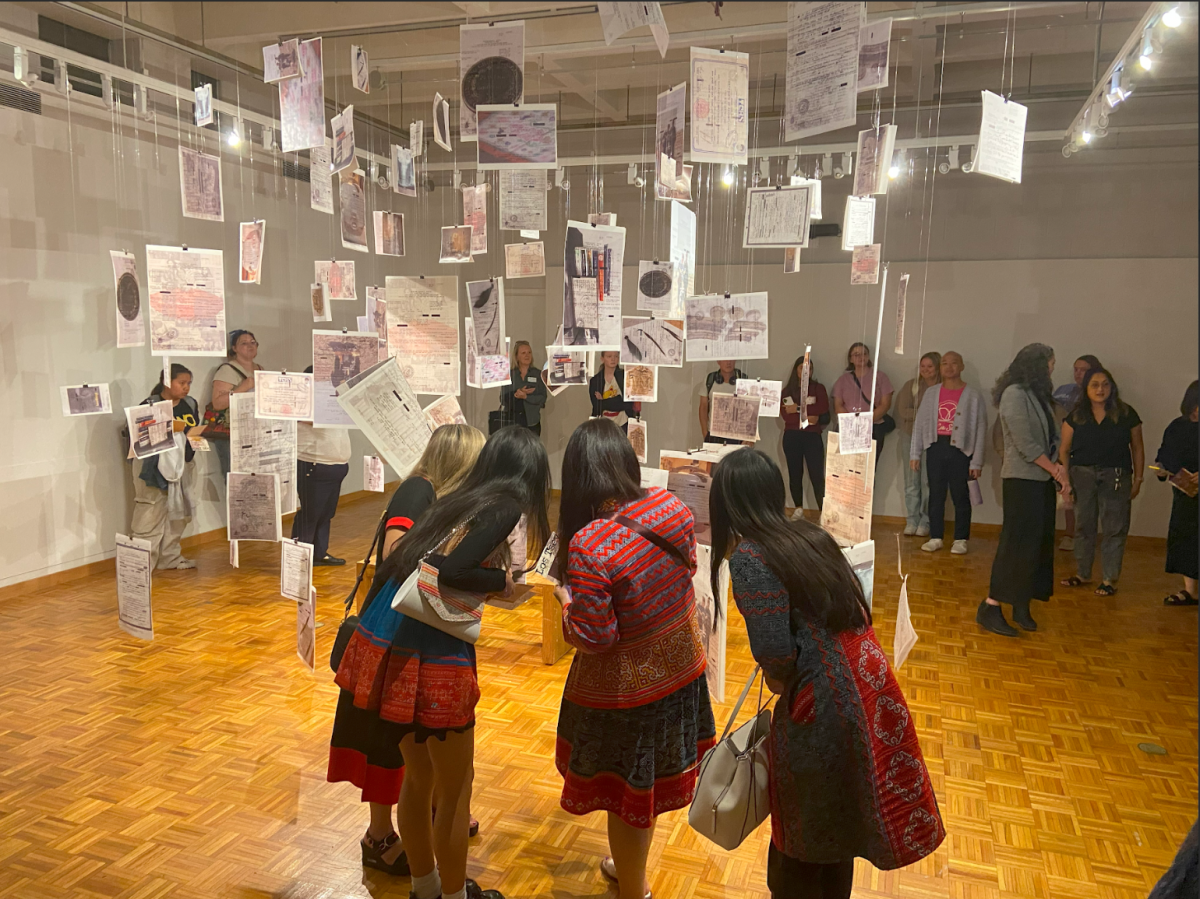“Mediated Mesh,” a gallery featuring artist Brittany Ransom and her recent art exhibit based on icebergs, opened Monday, at the Priebe Art Gallery.
Walking into the gallery, the viewer is greeted with turquoise blue beams of light cascading upon digital and 3-D prints of arctic rocks and sea ice, which were observed in the Arctic Circle.
The gallery also features sculptures, pictures and video. Of the 11 sculptures, five take the form of vibrant and colorful 3-D printed acrylic recreations of sea ice that washed upon the shores of Svalbard, Norway.
UW Oshkosh senior Isabella Tremonti said the sea ice replicas were her favorite aspect of the exhibit.
“Having learned about 3-D printing in my classes, it’s really cool seeing this style of art being shown on campus,” Tremonti said.
In 2014, Ransom embarked on a research residency, sailing the Arctic seas around the island of Svalbard, which is located in the Arctic Circle just north of Norway.
With a lack of WiFi and internet access, Ransom said her project flexibility was limited to using her cell phone solely as a way to capture 360-degree image collections of each object.
“I started using my cell phone as an observational tool, using it in a way to do 3-D scans of arctic sea ice along with a series of rocks and one fossil,” Ransom said.
After collecting all of her data on the three-week residency, Ransom said the various pictures were compiled into a mesh on a computer software program.
“All of these pieces in the gallery are different iterations of what are called a mesh,” Ransom said. “Together the pictures of each object are combined into a series of computer-generated mathematical points and triangles, creating a mesh.”
Ransom discussed the processes of how the recreation of these objects relates directly to the object’s physicality itself.
“When something changes physically, for example, the sea ice turning from ice, to water and back into ice, it has all of these material transformations,” Ransom said. “The same thing happens when you work digitally on a computer. The data is collected, the mesh is made on the computer and then when you try and remake that as an object, that data then shifts too.”
The overarching theme of the exhibit presented itself through the loss of information or material, according to Ransom.
“It’s about the physical material from the real world and the computational material and both of them having these kind of data losses,” Ransom said.
When it came to the creation and layout of the exhibit itself, Ransom said she made an effort to transport the viewer straight to the Arctic, not only visually, but through audio as well.
“If you listen, you can hear a trickling noise with a roar of thunder in the background,” Ransom said. “The trickling is actually tiny ice pieces falling into the water while the thunder sound is actually a glacier in the distance.”
Ransom said one of the most intriguing pieces of the exhibit comes in the form of a fossil taken from the reserve scaled 500 times its actual size.
“It was technically illegal to take anything from the reserve, but I had to take this fossil,” Ransom said. “The guilt of stealing the object translates to the overwhelming size of the replica, representing the weight and size of the guilt I still feel from taking the fossil.”
A stark contrast to the Arctic whites and blues on display, a vibrant shade of orange is seen outlining and framing many of the pieces and prints.
“I wore a pair of orange pants the entire trip, which is where I collected all the rocks that were turned into the 3-D prints on display,” Ransom said. “The orange is kind of this metaphor for the pocket, the pocket that collected all of these things together.”
Allen Priebe gallery director Leslie Walfish said Ransom’s Mediated Mesh is an exhibit that Oshkosh is lucky to be showing due to its immediacy.
“We have an artist who is dealing with such a time-sensitive topic, which is sustainability, and thinking about changes to environment,” Walfish said. “I think it’s a very important show, especially at this point in time, because of the sensitivity of climate change in nature.”
Walfish added the exhibition proves to be one of a kind, not only because of the topic sensitivity, but additionally through Ransom’s artistic method.
“Ransom uses her art skill in computer generation and 3-D printing, utilizing these newer technologies to explore this issue about the change in environment,” Walfish said. “She’s a really interesting person to have brought to campus because she’s working with such an up-and-coming art form to create something that’s about what’s happening to our world today.”







